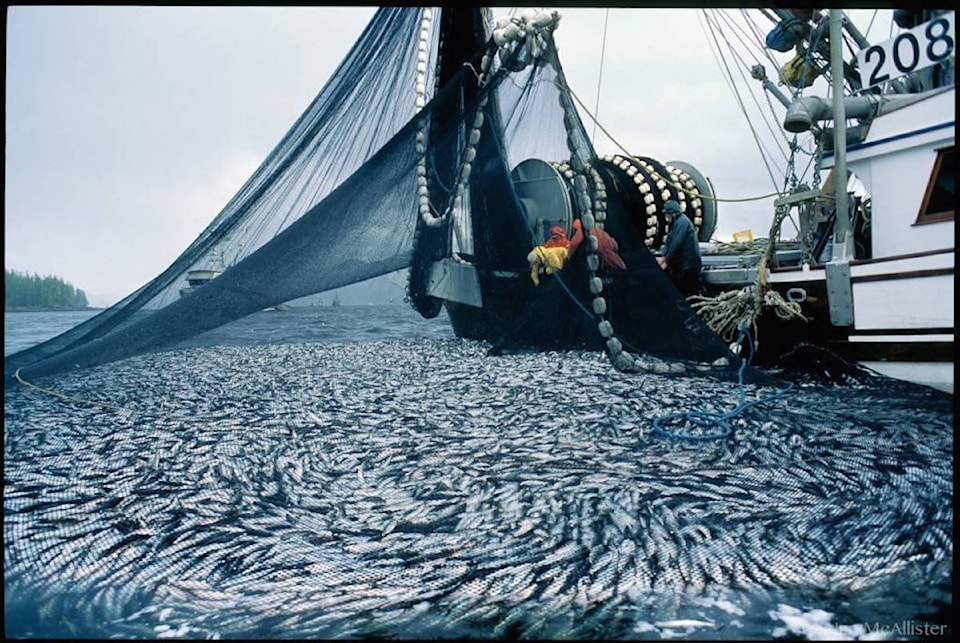Coastal communities and conservation groups say that Fisheries and Oceans Canada (DFO) has bowed to industry by opening the herring fishery in the Salish Sea. The harvest rate has been set at 20 per cent.
Conservancy Hornby Island and Courtenay-Alberni MP Gord Johns have both launched petitions to suspend the fishery. Johns has so far gathered more than 2,500 signatures on his e-petition. For every 25 signatures, he is able to rise in Parliament and challenge Bernadette Jordan, the new Minister for Fisheries and Oceans Canada.
READ: Opponents call for closure of herring…
“We know the overall risk the fishery poses to the stocks was changed from moderate to high in October of 2019,” said Johns, the NDP Critic for Fisheries and Oceans. “Their own department is saying they recommend a reduction of harvest rate from 20 to 10 per cent is the most effective way to mitigate the stock assessment errors…This is inter-connected to the salmon emergency in B.C.”
In 2016, he said the herring volume for the Strait of Georgia was 129,000 tonnes. This year’s prediction is 54,000 tonnes.
“We are seeing a very quick demise of the bedrock foundation species, and that’s our herring,” Johns said. “It’s a primary diet of our salmon, and resident killer whales. If we wipe this species out, it’s going to take decades, if even possible, to bring those stocks back to abundancy.”
At the Association of Vancouver Island and Coastal Communities (AVICC) convention last April, Johns said every elected official voted to suspend the herring fishery in the Salish Sea for 2020. He notes the K’ómoks First Nation has asked for a 20 to 15 per cent harvest reduction.
“And the Islands Trust has unanimously called for a moratorium on the fishery until the whole eco-system-based approach is in place,” Johns said.
He notes that government has said it supports science- and evidence-based decision-making — but science indicates herring was over-harvested last year.
“The minister seems to be listening to the herring fishing industry and going against her own scientists by recommending 20 per cent to be killed this year,” Ian McAllister of Pacific Wild said in a news release. “Her scientists are saying to be precautionary. It should be 10 per cent. Who is the minister listening to?”
Phil Young of the Canadian Fishing Company (Canfisco) feels the 20 per cent harvest rate is conservative.
He expects a small number of boats to be fishing this year.
“I think the seines are quite worried about the size of the fish,” Young said. “One of the things in the new management plan that was announced was that there’s ability to move seine fish into gill net. This is the first time they’ve allowed this. I think quite a bit will go that way, just to get the roe herring size. Because with seine, you always run that risk.”
Two years ago, he recalls much of the seine catch being left in the water because the fish were too small.
“This year, all the survey data that’s done is based on spawning biomass, so that’s fish that are at least three years old. That’s probably too small for the market, so we probably won’t harvest it. You never know what the ocean survival will be. If it’s a preponderance of small fish, it’s highly unlikely we would take all of our seine quota.
“We have been managing this fishery since the 70s very conservatively,” Young added. “We watched it rebuild after years of that reduction fishery in the first half of the century where they were just doing it for fish meal. Then they started managing it much more conservatively, and it rebuilt. The herring have been coming back for years and years. It’s grown. It’s in a cyclical downturn a bit, but it’s going to be interesting to see what happens this year. If all those two-year-olds come back, we’d be looking at another massive amount of herring in the straits. And then what does the argument become?”
reporter@comoxvalleyrecord.com
Like us on Facebook and follow us on Twitter
